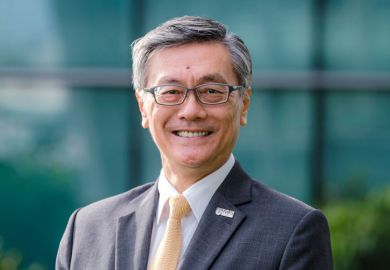The amount of energy needed to cool supercomputers is becoming unsustainable for universities in warmer climates that are using the machines to advance their research, the head of a leading Singapore university has warned.
Tan Eng Chye, president of the National University of Singapore, said the institution’s computational facilities were doubling in scale every three years, hampering efforts to reduce energy usage.
“It’s so easy to buy a supercomputer these days,” he told Times Higher Education. “The problem is that our traditional buildings [and] our cooling systems cannot be used to cool these machines.”
Supercomputers require a huge amount of energy to run, and they generate significant heat, requiring cooling infrastructure to keep them operating smoothly. In Singapore, where temperatures generally reach 30oC and above year-round, these challenges are exacerbated.
“We are smack in the middle of the equator,” Professor Tan said, adding that 60 per cent of the university’s electricity bill already went towards air conditioning. “How do I provide a centralised computing facility that may not actually deepen our carbon footprint?”
Campus podcast: universities aren’t too small to lead the climate crisis fight
Not only would continuing to grow computational facilities at the current rate become “very expensive”, he said, it also went against the university’s sustainability targets, which aim to cut electricity usage by 30 per cent.
“I haven’t got a solution yet,” Professor Tan said, but noted that he was working with organisations trying to develop “green computing centres”.
Universities around the world are facing similar issues and some have come up with novel ideas to tackle this challenge. In Scotland, the University of Edinburgh has launched a project aiming to use the excess heat generated by supercomputers to warm local homes.
The advancement of supercomputers goes hand in hand with applied artificial intelligence (AI) research. In March 2024, NUS established a new AI Institute to conduct research in areas including usage in robotics and logistics.
Meanwhile, Professor Tan said, the university was also grappling with how to embed the technology into education and ensure professors were prepared to use it in their teaching.
“There’s an urgency, because students are already using it and it doesn’t make sense to tell your students, ‘No, you can't use AI’, because they’re going to use AI when they are [in the workplace],” he said.
He added that the institution was trying to build a “critical mass of professors who are AI-savvy and willing to experiment” as well as incorporate AI tools into their teaching and assessments. He said he hoped they would then provide inspiration “for other faculty members to incorporate AI”.
Throughout Professor Tan’s six years in the role, he has continued to drive interdisciplinary learning, which he believes will prepare students for a world in which AI is increasingly rendering some professions obsolete.
Students in the College of Humanities and Sciences and the College of Design and Engineering – faculties purposefully fused together – are required to take 15 common curriculum courses that cover a range of varied topics.
“If you look at modern-day challenges…that our graduates are expected to solve, they are very complex in nature and no one discipline actually provides you with a solution,” he said. “You need teams of people from different disciplines to come together to come up with a possible, even partial, solution.”
Register to continue
Why register?
- Registration is free and only takes a moment
- Once registered, you can read 3 articles a month
- Sign up for our newsletter
Subscribe
Or subscribe for unlimited access to:
- Unlimited access to news, views, insights & reviews
- Digital editions
- Digital access to THE’s university and college rankings analysis
Already registered or a current subscriber?










